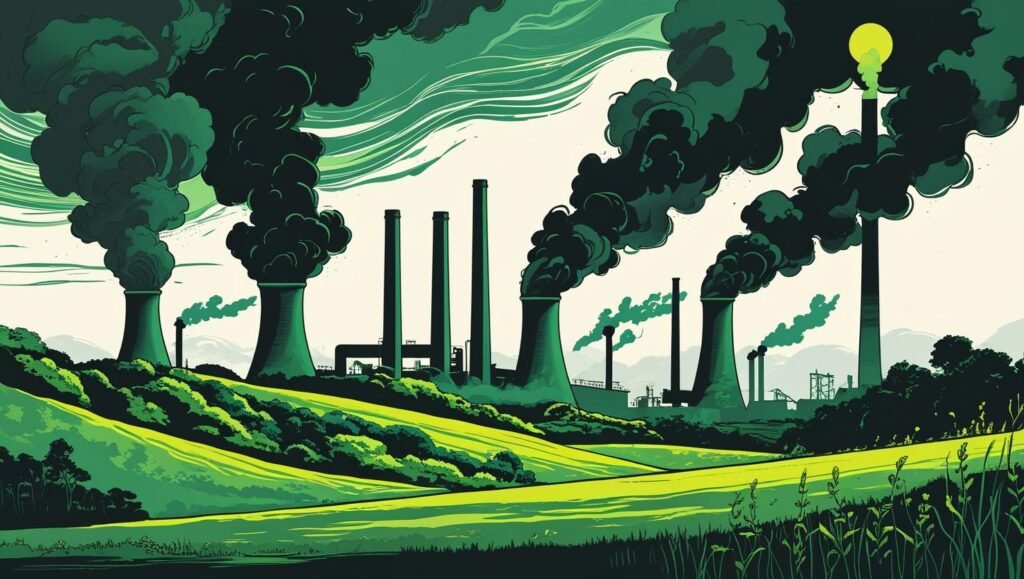The narrative around green innovations often presents them as the definitive path to solving our climate crisis. From vast solar arrays to futuristic electric vehicles, these advancements promise a cleaner, more sustainable future. Yet, a growing chorus of voices expresses skepticism about green technology‘s ability to single-handedly “save the planet.” This isn't necessarily a rejection of environmentalism, but rather a critical examination of the limitations, unintended consequences, and systemic challenges that can hinder even the most well-intentioned green tech solutions.1 Understanding this green technology skepticism is crucial for developing truly effective and equitable strategies for environmental sustainability.

The Core Arguments of Green Technology Skepticism
The critiques leveled against the sole reliance on green technology often stem from several fundamental concerns:
- The “Techno-Fix” Mentality (and the Rebound Effect):
- One of the most common arguments is that technology alone cannot solve deeply systemic problems rooted in human behavior, overconsumption, and economic models driven by endless growth.2 Critics argue that a focus on “techno-fixes” distracts from the more fundamental need for societal and behavioral changes, such as reduced consumption, altered dietary habits, and systemic economic restructuring.3
- The “rebound effect” or “Jevons paradox” suggests that increased efficiency (e.g., more fuel-efficient cars) can sometimes lead to increased consumption (e.g., people driving more), negating the intended environmental benefits Source: Debating Matters – Technological progress will not solve society's environmental issues.
- Resource Intensity and Life Cycle Impacts:
- While green technologies operate cleanly, their manufacturing often requires significant amounts of energy and raw materials, including rare earth elements, lithium, cobalt, and copper.4 The extraction and processing of these materials can have substantial environmental and social costs, including habitat destruction, water pollution, and human rights issues in mining communities.5
- Critics argue that if the entire life cycle of a green product – from mining to disposal – isn't truly sustainable, we might merely be shifting environmental problems from one area (e.g., fossil fuel emissions) to another (e.g., toxic waste from batteries or mining pollution) Source: Gyatk – Sustainability Struggles: Exploring the Challenges of Green Technology. The lack of robust global recycling infrastructure for complex green tech components like EV batteries and solar panels further exacerbates this concern.6
- Scalability and Cost Barriers:
- Many green innovations are still expensive, requiring high upfront investment that can be prohibitive for individuals, businesses, and especially developing nations.7 While costs are coming down, widespread global adoption requires massive financial commitments and supportive policies.8
- Scaling up green tech to the necessary global level within the urgent timeframe required to avert catastrophic climate change is a monumental logistical and financial challenge Source: Climate.Sustainability-Directory.com – What Are Key Challenges In Green Technology Adoption?.
- Intermittency and Grid Integration Challenges (for Renewables):
- Renewable energy sources like solar and wind are intermittent – the sun doesn't always shine, and the wind doesn't always blow.9 This requires robust energy storage solutions (like batteries) and smart grid infrastructure, which are still evolving and face their own resource and cost challenges. Without reliable backup or sufficient storage, grids heavily reliant on renewables may struggle to meet constant demand.10
- The Promise vs. Reality of Carbon Capture:
- Carbon capture, utilization, and storage (CCUS) technology is often highlighted as a crucial tool, particularly for hard-to-abate industrial sectors.11 However, skepticism about carbon capture technology is significant:
- Energy Intensity: The process of capturing carbon is highly energy-intensive, often requiring a substantial portion of the power plant's own energy output, potentially reducing overall efficiency Source: RIFS Potsdam – Environmental Impacts of Carbon Capture Technologies.
- Leakage Risk: Storing captured CO2 underground for millennia carries the risk of leaks, which could release the gas back into the atmosphere and harm local ecosystems or human health Source: Storegga – Carbon Capture and Storage Risks, Explained.
- Moral Hazard/Prolonging Fossil Fuels: Critics worry that widespread adoption of carbon capture technology could create a “moral hazard,” giving industries an excuse to continue burning fossil fuels rather than transitioning away from them entirely.12 Some captured carbon is even used for enhanced oil recovery, further perpetuating fossil fuel extraction Source: Climate Impacts Tracker – The Health and Environmental Impacts of Carbon Capture and Storage (CCS).
- Cost and Scalability: Despite decades of development, carbon capture remains extremely expensive and has struggled to scale up effectively Source: Climate Impacts Tracker – The Health and Environmental Impacts of Carbon Capture and Storage (CCS).
- Carbon capture, utilization, and storage (CCUS) technology is often highlighted as a crucial tool, particularly for hard-to-abate industrial sectors.11 However, skepticism about carbon capture technology is significant:
Addressing Green Technology Skepticism: Beyond the Hype
Acknowledging these critiques doesn't mean abandoning green innovations. Instead, it fosters a more realistic and comprehensive approach to climate action.
- Holistic Thinking: True environmental sustainability requires not just technological fixes but also fundamental shifts in consumption patterns, economic incentives, and policy frameworks. Investing in public transport, promoting plant-based diets, and designing products for durability and reuse are equally crucial.
- Responsible Sourcing & Recycling: Developing transparent, ethical supply chains for critical minerals and establishing robust global recycling infrastructure for green tech components are paramount.13 This involves holding green tech companies accountable for their entire product lifecycle.
- Governmental Support & Policy Stability: Strong governmental policies, subsidies, and regulatory frameworks are essential to lower costs, incentivize adoption, and create a stable market for green technologies.14 For example, India's push for India carbon capture initiatives, while facing challenges, highlights the need for policy and investment to make these solutions viable.
- Targeted Innovation: Focusing green innovations on hard-to-abate sectors or regions where other solutions are not feasible can maximize impact. Companies like AES Clean Energy are focusing on utility-scale renewable energy and energy storage, acknowledging the need for integrated, reliable systems to move away from fossil fuels.15
Image 2: *[An infographic or split image showing “Challenges” on one side (e.g., a hand reaching for a “too expensive” tag, a factory emitting some processing waste, a grid with intermittent power lines) and “Solutions” on the other (e.g., people collaborating, a symbol of circular economy, a government policy document, diverse energy storage solutions).]
*

Conclusion: A Nuanced Path Forward
The skepticism about green technology serves as a vital check on technological optimism. It reminds us that while innovation is indispensable, it is not a magic wand. Saving the planet requires more than simply buying carbon capture solutions or installing more solar panels. It demands a multifaceted approach that combines technological advancements with behavioral change, systemic reform, and a deep commitment to social and environmental justice throughout the entire value chain.
Ultimately, green innovations are powerful tools, but their effectiveness depends on how they are designed, implemented, and integrated into a broader strategy for environmental sustainability. By listening to the critics and addressing the underlying concerns, we can ensure that our pursuit of a greener future is truly sustainable, equitable, and effective in the long run. To find green technology news that distinguishes between genuine progress and mere hype, it's essential to look for in-depth analysis that considers the full picture, not just the promotional headlines.
Want to Explore More?
Read our latest piece: Green Technologies of the Future: Which Developments Will Save the World?.
Comment below: What’s your take on the environmental cost of green tech?
Tag us on social media using #GreenTechRealityCheck
nature.com+7thenevadaindependent.com+7lithiumharvest.com+7
Have questions or thoughts? Comment below and let us know what more you’d like to learn about green technology—we’d love to hear from you!








